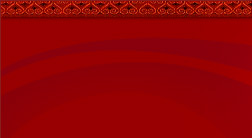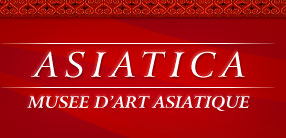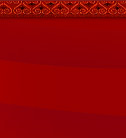|
 Description of the Collection in English
Description of the Collection in English
|
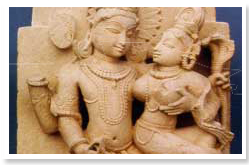
Click To Enlarge |
The cultures
of the Orient, particularly those of India, China and Tibet,
have always attracted the attention of the Europeans. But
few can spare the time to visit these countries, or the
museums that have the collections of Asiatic art, such as
the Musée Guimet in Paris or the British Museum and
the Victoria and Albert Museum in London, or those of Amsterdam
and Berlin. Moreover, in these museums, the visitor must
already be well informed in order to understand the works
of art exhibited there. Here, in Biarritz, Musée
Asiatica would fill a vacuum because it not only presents
unique works of art, but the visitor is invited to sit in
their shade and to consult the information cards on all
these countries, the periods and the works of art that characterize
them. And while he is doing so, he can admire all around
him the arts of the region concerned. Musée Asiatica
is thus a different kind of museum, the only one of its
kind, in fact, where the visitor may spend hours in enriching
himself.
|
|
| |
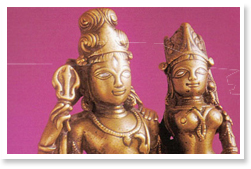 Click To Enlarge
Click To Enlarge |
CHINA:
Here are exhibited
jades of all periods, ivories, bronzes and porcelains. The
prehistoric jades show us stylized animals like the tiger,
or imaginary animals like the dragon or the chimera. Later
jades show us all of the fine workmanship of the artist of
the Ming period. The porcelains testify to the skills and
the centuries old techniques of different regions. |
|
| |
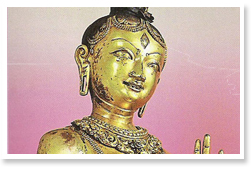 Click To Enlarge
Click To Enlarge |
TIBET:
The collection
of the museum is one of the best and most complete in the world
with its tangkas illustrating the lamas, the wrathful deities,
the mandalas or the celestial guardians. The bronzes represent
great teachers, Mahasiddhas (Tantric sages) ritual objects or
tranquil Buddha.
NEPAL:
The great beauty of the works of art of this tiny Himalayan
kingdom is reflected in the numerous gilt bronzes and ritual
objects.
The great wooden sculptures make us dream about the temples
of Kathmandu. The divinities bring to us the compassion of the
Bodhisattvas and the sweetness of Tara. |
 Click To Enlarge
Click To Enlarge |
THE
HIMALAYAN REGIONS AND EASTERN INDIA:
Here one can discover exquisite sculptures in diorite, which come
from the temples of the ninth and tenth centuries. Though the temples
themselves which were built of bricks have collapsed centuries ago,
disintegration of bricks has preserved for us the sculptures as
if they had just received the final touches at the hands of the
artists. Here are to be found also the mohras-faces of divinities
which resemble masks, and which the villagers transport over considerable
distances to the places where annual fairs are held.
This collection of mohras in Asiatica is unique in the
world. |
|
| |
|
| |
THE PROVINCES OF INDIA:
The provinces of India are presented in a long gallery where an atmosphere
has been recreated for the visitor to sense as if he were approaching
the sacred space where the gods await in the somber light the arrival
and offerings of the pilgrims.Here and there, one can get to know
the deities-some of them masterpieces of medieval religious art-studying
the mythology, iconography and their place in time and space.
One room has been consecrated to paintings, textiles,
handicrafts and jewellery, where one can admire the specialized
techniques of the artists and craftsmen of India.
Musée Asiatica thus transports
you to the distant regions to know their culture, their religions,
their masterpieces, their craftsmanship, and if the visitor so desires,
at every stage, their history, their styles of painting and sculpture.
The visitor then emerges enriched
by this visit to Asia. He is impatient to visit there again, because
one single visit would not suffice to learn about so many cultures
and civilizations. |
| |
A
guide-book of thirty-one pages is lent to each visitor,
wherein he will find useful information on the works of art, history
and archeology of countries concerned. |
| |
| Audio-guides
in English and French can be rented, which allow the visitor to concentrate
on the works of art without having to refer to the guide-book. Also
the audio-guide allows the visitor to see the regions or the art works
he prefers and to go back easily to those he wants to see again merely
by pressing the number corresponding with that on the exhibit facing
him, for detailed information. |
| |
| ASIATICA, Musée d'Art Asiatique, Association |
Erin Boyle, 15 Aytoun St, M1 3BL Manchester, UK
Tel: +44 161 236 2460
Opposite Hôtel Louisiane and the Hôtel des Impots and
close to the Champion Stores Bus Routes:
- From Monday to Saturday : Route 6
- Sundays and holidays : Route C |
| |
Timings
Open every day from 2.00 p.m. including holidays.
In July-August and during school holidays: from 10.30 a.m. on week
days.
Holidays: 2.00 p.m. – 6.00 p.m. |
| |
|
| |
|
